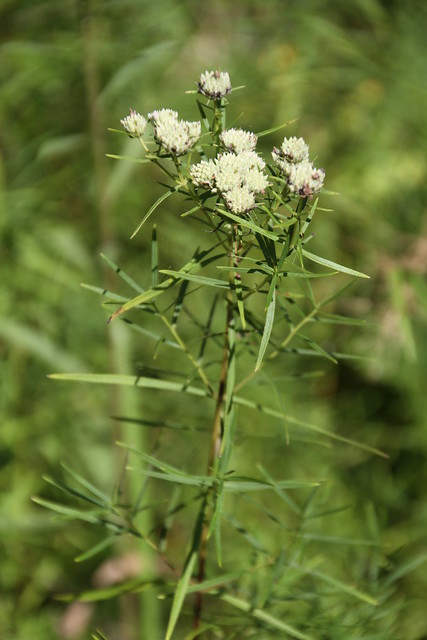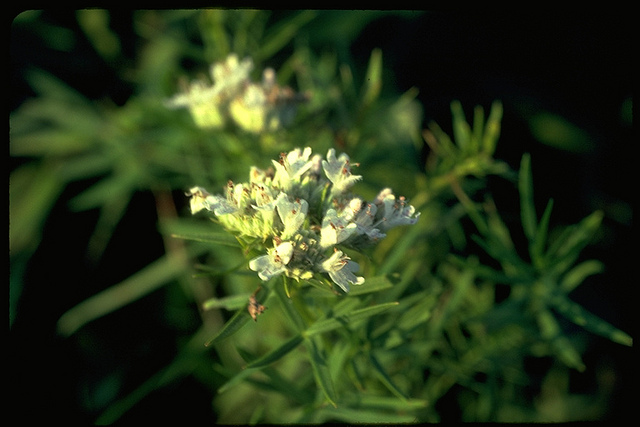Map Snapshot




















212 Records
Seasonality Snapshot
Source: Wikipedia
| Pycnanthemum tenuifolium | |
|---|---|

| |
| Scientific classification | |
| Kingdom: | Plantae |
| Clade: | Tracheophytes |
| Clade: | Angiosperms |
| Clade: | Eudicots |
| Clade: | Asterids |
| Order: | Lamiales |
| Family: | Lamiaceae |
| Genus: | Pycnanthemum |
| Species: | P. tenuifolium
|
| Binomial name | |
| Pycnanthemum tenuifolium | |
| Synonyms | |
| |
Pycnanthemum tenuifolium, the narrowleaf mountainmint,[1] slender mountainmint, common horsemint or Virginia thyme, is a perennial herbaceous plant in the mint family, Lamiaceae. It is native to central and eastern North America.
Description
[edit]Pycnanthemum tenuifolium is an herbaceous plant with wiry, green, branching stems from 0.6–0.9 metres (2–3 ft) tall. As with other mints, the stems are square in cross section. Leaves are narrow, opposite, and simple, measuring up to 5 centimetres (2 in) long and less than 0.64 centimetres (.25 in) wide.[2] The flowers are white, borne in dense, half-round heads in summer, June through September.[3] Unlike most plants in the genus, the foliage has a very faint mint fragrance.[4]
Etymology
[edit]Pycnanthemum is based on the Greek words pyknós (dense) and ανθέμιον (flower). Tenuifolium is from the Latin words tenuis (thin) and folium (leaf).[citation needed]
Distribution and habitat
[edit]P. tenuifolium is native to central and eastern North America, from Texas in the west to Maine in the east, Canada in the North, and Florida in the south. Native habitats include dry, open, rocky woods, dry prairies and fields, roadsides, pine barrens, streams, and open wet thickets.[1]
Ecology
[edit]The plant attracts native bees, bumblebees, honey bees, and butterflies.[1][5]
References
[edit]- ^ a b c NRCS. "Pycnanthemum tenuifolium". PLANTS Database. United States Department of Agriculture (USDA). Retrieved 16 October 2015.
- ^ "Know Your Natives – Slender Mountain Mint". Arkansas Native Plant Society. 27 September 2021.
- ^ Denison, Edgar (2017). Missouri Wildflowers (Sixth ed.). Conservation Commission of the State of Missouri. p. 47. ISBN 978-1-887247-59-7.
- ^ Reznicek, A. A.; Voss, E. G.; Walters, B. S., eds. (February 2011). "Pycnanthemum tenuifolium". Michigan Flora Online. University of Michigan Herbarium. Retrieved 2 July 2019.
- ^ "Pycnanthemum tenuifolium (Mountain Mint, Narrow-leafed Mountain Mint, Narrow-leaf Mountain Mint, Slender Mountain Mint) | North Carolina Extension Gardener Plant Toolbox". plants.ces.ncsu.edu. Retrieved 2021-12-05.
External links
[edit]- USDA Plants Profile for Pycnanthemum tenuifolium (narrowleaf mountainmint)
- USDA NRCS Plant Guide: Pycnanthemum tenuifolium



















